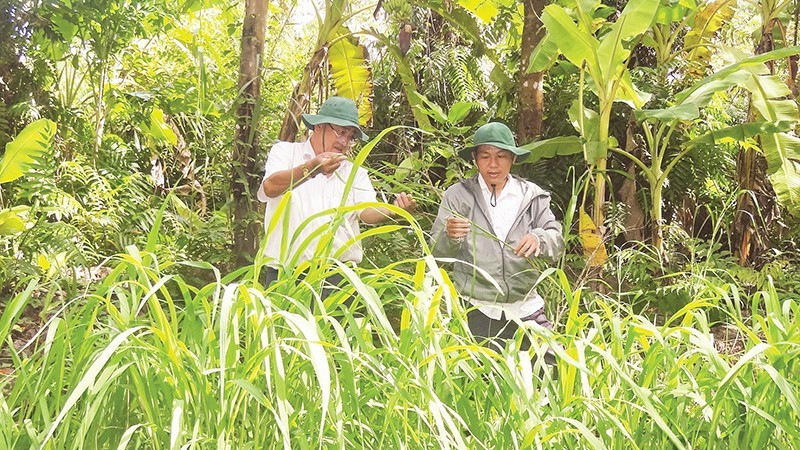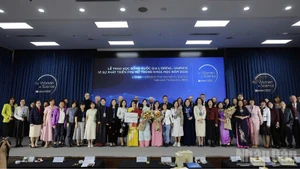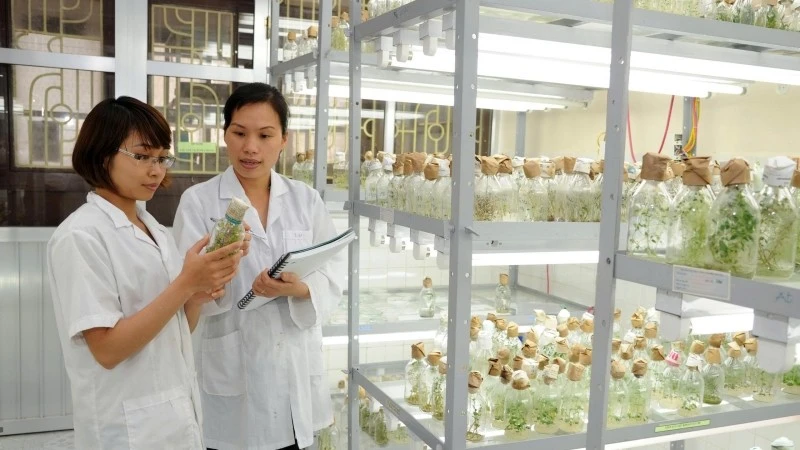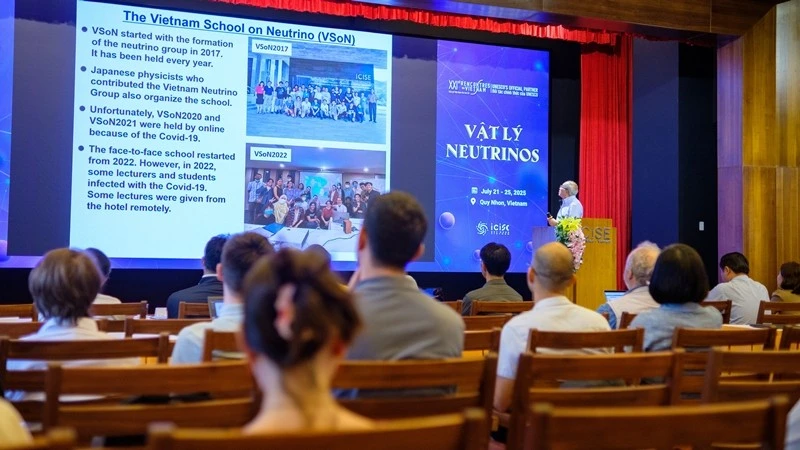Under increasing threats of climate change and crop diseases, conserving wild rice biodiversity here is not only an urgent task but also a sustainable direction for the rice industry.
Untapped potentials
Located at the ecological core of the Mekong Delta, the Lung Ngoc Hoang Nature Reserve is known as the “green lung” of the southwestern region with its rich wetland forest ecosystem. It still preserves many wild rice populations with high scientific and economic value. These wild rice varieties not only contribute to ecological balance protection, they are considered a “living gene bank”, playing a crucial role in breeding new rice varieties, which can be resistant to pests and diseases and adaptable to climate change, thereby ensuring food security.
According to Le Thanh Son, Deputy Director in charge of the Lung Ngoc Hoang Nature Reserve, wild rice grows beneath forest canopies or along canals in small patches, distributed widely but without measuring areas.
“In areas with good water circulation, the rice grows stronger. Particularly, the rice along tidal canals with regular silt deposition thrives well due to less competition,” he explained.
The Lung Ngoc Hoang Nature Reserve has proposed collaboration with scientists and relevant agencies to identify the distribution and assess the growth status of wild rice. At the same time, research will also focus on identifying suitable ecological conditions, building and testing restoration models, and proposing solutions to long-term management and conservation.
Through carrying out scientific and technological research projects, putting them into practical management and conservation, Tran Be Em, Head of the Department of Science and Wetland Conservation of the reserve, said that his department has implemented many research projects, notably the project “Scientific research and technological development for the survey of fauna and flora at Lung Ngoc Hoang.” This project expanded the database, added newly discovered species, removed unsuitable ones, and recorded the characteristics of the wetland ecosystem. Since 2015, an additional 981 species from 26 genera and 19 families have been added to the reserve’s plant inventory.
The department is currently surveying wild rice distribution through fieldwork, monitoring population growth, making reports, mapping, and selecting the 1–2-hectare preservation zone in the ecological restoration sub-region. Activities include site clearing, planting trees for rehabilitation, care, monitoring, data collection, and reporting, forming the basis for long-term conservation planning.
Materials for crossbreeding new rice varieties
According to Tran Be Em, around April each year, as the rainy season begins, wild rice seeds germinate, developing tall stems, broad leaves, and roots capable of neutralising soil acidity while absorbing nutrients. From August to December, the rice plants grow and produce large, straight panicles with small, sparse grains. Once ripe, the grains easily fall under sunlight and drift away with water, sprouting into new plants. Wild rice ripens only once a year and contains genes resistant to brown planthoppers and white-backed planthoppers. It flowers in October and ripens gradually between November and December, unlike cultivated rice, which ripens simultaneously.
Dr. Nguyen Thuy Kieu Tien, Deputy Head of the Cuu Long Delta Rice Research Institute, said that this region has a long history of wild rice development with rich genetic diversity. However, natural wild rice areas have been shrinking due to agriculture and aquaculture expansion, leading to a loss of valuable genes. Wild rice varieties have complex and rich genetic structures with many primitive traits, carrying precious genes for pest and disease resistance (brown planthopper, blast, bacterial leaf blight) as well as tolerance to salinity and acidity.
Wild rice is an important genetic source for new variety crossbreeding programmes. By crossbreeding wild and high-yield rice varieties, scientists can exploit genetic variation to create new rice varieties, which is adaptable cultivars.
“In-situation conservation is the optimal way to preserve genetic resources in nature. Therefore, protecting wild rice at the Lung Ngoc Hoang Nature Reserve is of utmost importance,” Dr. Tien emphasised.
Son added that the Lung Ngoc Hoang Nature Reserve has strictly complied with regulations on genetic resource management and biosafety, focusing on conserving native habitats and local ecosystems; protecting indigenous, endangered, and rare species; and simultaneously monitoring invasive alien species and non-native plants threatening the Lung Ngoc Hoang ecosystem. Based on these efforts, the reserve proposes sustainable measures for the protection and conservation of wild rice ecosystems.
Through conservation and research, the Lung Ngoc Hoang Nature Reserve has built a biodiversity database to serve for archiving information and researching and crossbreeding varieties. This is an active step, contributing to the preservation of valuable genetic resources and serving long-term food security. From the wild rice grains drifting along today’s waterways, they may sprout the strong and resilient rice varieties of tomorrow. Preserving wild rice means protecting the seeds of life, sustainable food security of the fertile land region.
In the developing current of modern agriculture, where new rice varieties are constantly developed, conserving a wild rice species may seem contrary to progress. However, the primitive genes are the key to sustainable food security. Through the quiet dedication of scientists, the Lung Ngoc Hoang Nature Reserve continues day by day to protect these precious seeds for the future generations.
















